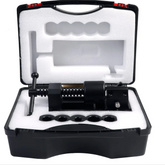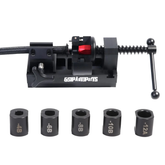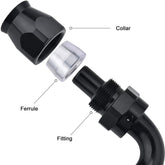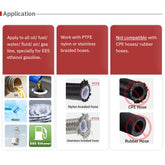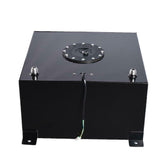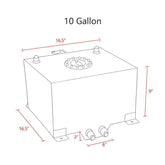The 2.5L Aluminum Radiator Coolant Overflow Reservoir Recovery Water Tank Bottle is designed to efficiently manage excess coolant, keeping your engine cool under various conditions. In this guide, we will explore the benefits, features, installation, and maintenance of this high-quality aluminum reservoir.
What are the advantages of an aluminum coolant overflow reservoir?
Aluminum reservoirs are much stronger and more durable than plastic ones. They can withstand harsh conditions and are less likely to crack or degrade over time.
Aluminum has superior thermal conductivity, which helps dissipate heat more effectively. This is essential for maintaining the optimal temperature of your engine and preventing overheating.
High-grade aluminum alloy is highly resistant to corrosion, ensuring that the reservoir remains functional and intact even when exposed to coolant and other automotive fluids.
An aluminum coolant overflow reservoir adds a polished, professional look to your engine bay. Its sleek silver finish and black textured powder coating enhance the overall aesthetic of your vehicle.
Comparison: Aluminum VS Plastic Coolant Overflow Reservoir
Pros:
- Durability: Resistant to cracking and damage.
- Thermal Conductivity: Better heat dissipation.
- Corrosion Resistance: High resistance to corrosion.
- Aesthetic Appeal: Sleek and polished look.
Cons:
- Cost: Generally more expensive than plastic.
- Weight: Slightly heavier than plastic.
- Plastic Coolant Overflow Reservoirs
Pros:
- Cost: More affordable.
- Weight: Lighter than aluminum.
- Flexibility: Can absorb impacts without breaking.
Cons:
- Durability: Prone to cracking and degradation over time.
- Thermal Conductivity: Poor heat dissipation.
- Aesthetic Appeal: Less appealing look.
Ultimately, the choice should align with your specific needs and budget, balancing between long-term durability and immediate cost considerations to ensure optimal performance and reliability of your vehicle's cooling system.
How do I install an aluminum radiator coolant overflow reservoir?
Ensure the engine is cool and the vehicle is parked on a flat surface. Wear safety gloves and goggles.
Find the current coolant overflow reservoir in your vehicle.
Carefully drain the coolant from the existing reservoir into a suitable container.
Disconnect the hose and any mounting brackets holding the old reservoir in place.
Inspect the new reservoir and ensure all components are included.
Secure the new reservoir in place using the provided brackets and screws.
Attach the hose to the new reservoir, ensuring it is tightly secured with hose clamps.
Refill the reservoir with coolant to the recommended level and check for leaks.
Start the engine and let it run for a few minutes. Check the new reservoir for proper functioning and ensure there are no leaks.
How to maintain the Aluminum Coolant Overflow Tank?
Periodically check the reservoir for any signs of wear or damage, such as leaks, cracks, or discoloration.
Always maintain the proper coolant level to prevent engine overheating.
Keep the exterior of the reservoir clean to prevent dirt and debris buildup.
Check for any signs of corrosion, especially around the hose connections.
Before extreme weather conditions, inspect the coolant system to ensure it’s ready for temperature changes.

